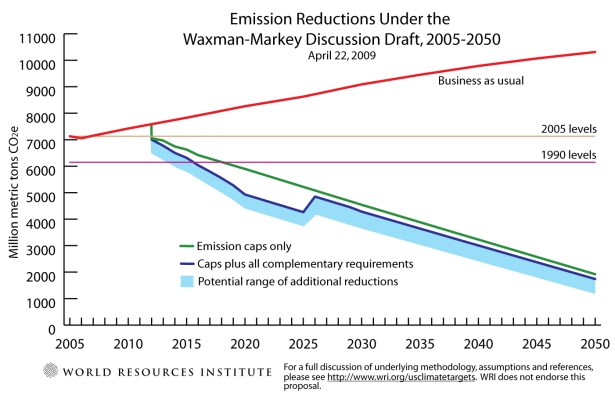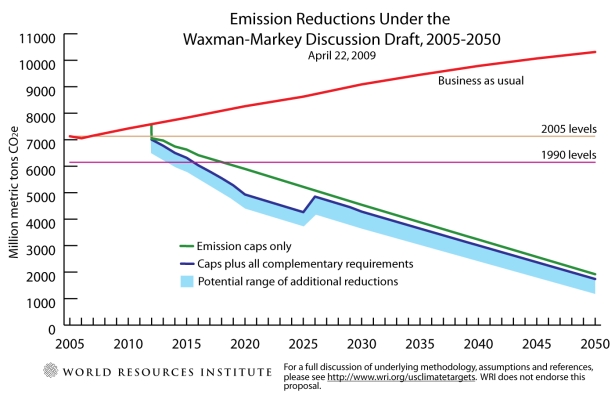I said in a post the other day that the Waxman-Markey bill is a Rorschach blot. Here’s a good way of making the point.
This is the World Resources Institute’s estimate of emissions reductions under Waxman-Markey — the original draft released in April:
Here’s WRI’s updated estimate for the hashed-over Waxman-Markey bill introduced to committee this week:
Is this a grotesque ruination brought on by special interests or a modest adjustment necessary to build a political coalition with a fighting chance? As I said, I’m seeing it kind of shimmer back and forth between those two states, and it’s making me a little dizzy.
Here are WRI’s key findings:
• The pollution caps proposed in the ACESA would reduce total GHG emissions 15 percent below 2005 levels by 2020 and 73 percent below 2005 levels by 2050.
• When all complementary requirements of the ACESA are considered in addition to the caps, GHG emissions would be reduced 28 percent below 2005 levels by 2020 and 75 percent below 2005 levels by 2050.
• When additional potential emission reductions are considered, the ACESA could achieve maximum reductions of up to 33 percent below 2005 levels by 2020 and up to 81 percent below 2005 levels by 2050. The actual amount of reductions will depend on the quantity of international offsets used for compliance.
• The ACESA’s proposed pollution caps result in reductions of total GHG emissions of 15 percent below 2005 levels by 2020. This is less than the 17 percent reduction from 2005 levels that the Waxman Markey Discussion Draft as released would have achieved. (Click the chart for a high-resolution version.)





